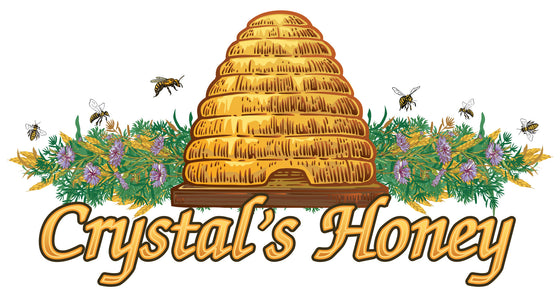Have you ever wondered how honeybees create perfectly hexagonal cells in a honeycomb? It’s a fascinating natural phenomenon that’s intrigued scientists and bee enthusiasts for ages. While it was once believed that bees were mathematical geniuses, new insight has suggested a more straightforward explanation. The heat generated by the hive activity naturally causes the initially circular cells to transform into distinct hexagons. Nature effortlessly orchestrates this architectural masterpiece without requiring complex calculations or bee mathematicians.
What else can we admire about honeycomb? Read our list of interesting facts you probably didn’t know about honeycombs.
Honeybees Aren’t the Only Species Using Hexagonal Building Structures
Bees are famous for creating their hives using hexagonal building structures but aren’t the only species using this architecture. Paper wasps are another buzzy insect that constructs their nests with this building design to nest their brood. Various plant species also use hexagonal building designs to move water from the roots of a plant to its leaves for photosynthesis.
Beeswax Makes Comb Honey More Aromatic
The rawest form of honey is the comb, and it might be the most beneficial honey type than what you typically find in a jar. Honeycomb contains about 12% less water than liquid honey, meaning it’s more concentrated. Essential vitamins, pollen, antioxidants, and enzymes are secure when sealed inside the wax cells.
Honeycomb Lasts a Long Time
Honeycomb doesn’t expire when you use the proper storage methods. Ever. Keep your comb honey sealed inside a container away from moisture. The longer you store it in a container or jar, the longer it lasts. But it won’t last long for us because it’s delicious and fun to use in various recipes.
Comb Honey Processing Starts in Beeswax
The starting point of the honeycomb is beeswax. Generally, beeswax comes from the genus Apis, measured by eight wax-producing glands. The wax helps shape and form the comb with the wax bees secret from their abdomen. The bees create honeycombs for storage purposes, especially during the winter when survival is most important.
Bees Produce Honeycomb for Various Activities
Bees produce honeycomb for reasons far beyond honey. They have various activities they use honeycombs for, such as nesting, developing their young, and storing pollen. Many worker bees spend hours constructing comb honey to help stabilize all hive activities.
Honeycomb Is Edible by the Block
Honeycomb is edible by the block, especially the filmy wax that comes with it. The wax is like gum; you can chew and spit it out but don’t swallow too much of it, especially if it’s not food-grade beeswax. You can consume honeycomb in many ways, such as alongside toast, crackers, meats, and cheese on a charcuterie board or straight from the tin with a spoon.
Honeycomb is the sweet embrace of nature, and we have these fun facts about comb honey to back it up. Embrace the sweet aroma of raw honeycomb honey by buying a jar from Crystal’s Honey. Our honey variety is a delicious adventure every honey enthusiast needs to embark on yearly—or daily. You can find variety and incredible value with our honey selection.
